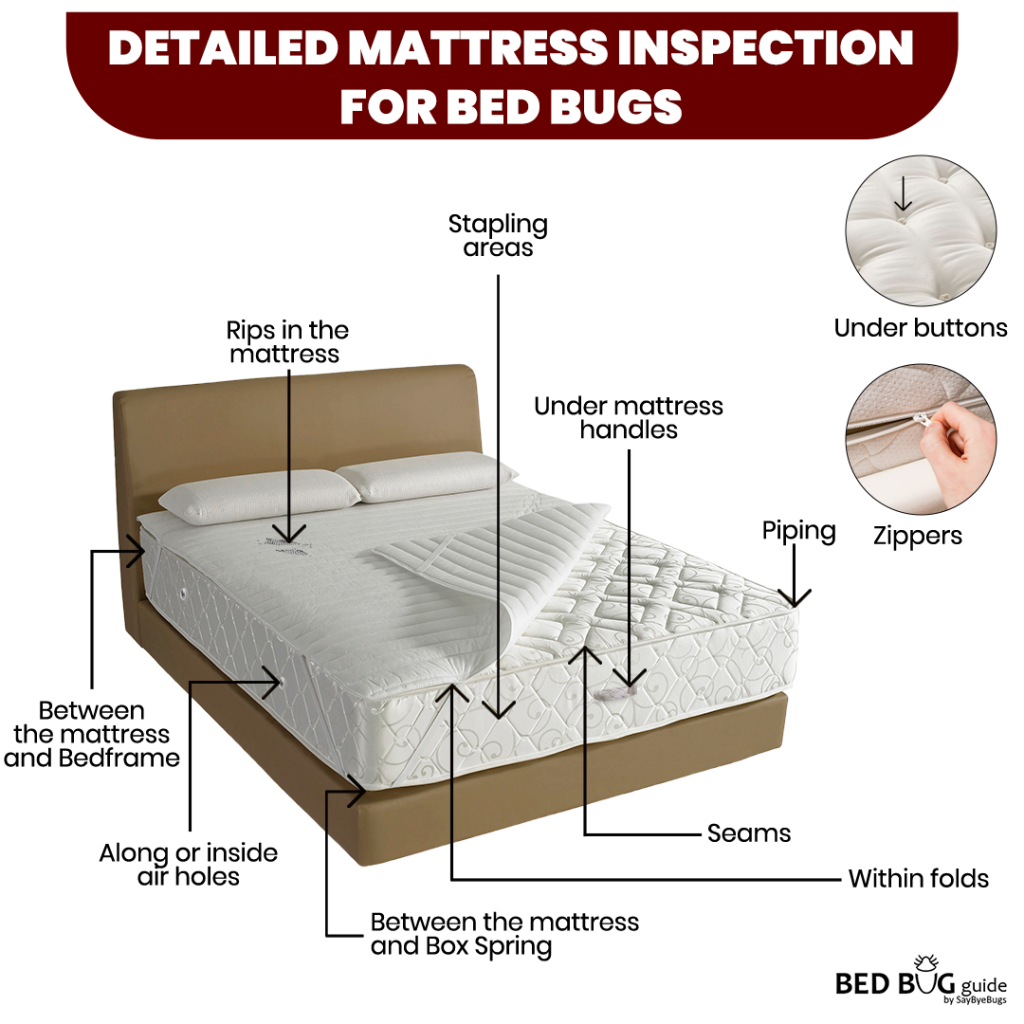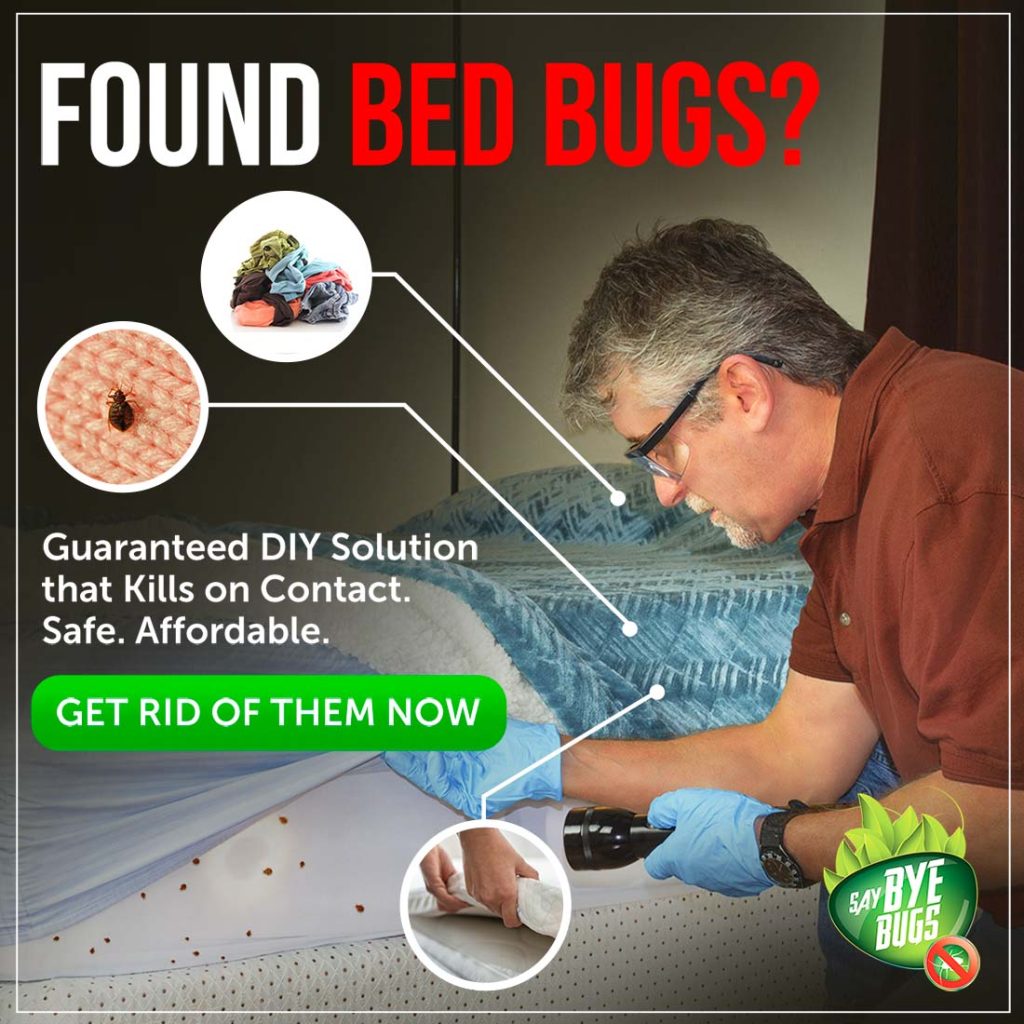Are you suspecting you have bed bugs, but do not know how or where to start? Even what exactly to look for?
You’ve come to the right place. After reading this article you will be able to perform a home bed bug investigation by yourself. You will learn how they look like, where to find them and what to do about them.
What are bed bugs
A bed bug (Cimex lectularius) is a small, wingless insect of the family Cimicidae. It has an oval-shaped body that is reddish-brown in color. Distinctive are also their two-segmented antennas, 6 legs, and a three-part body consisting of the head, thorax, and abdomen.

Adult bed bugs are small, typically ¼ inch in length. About the size of an apple seed. In total, they are flat from top to bottom. This enables them to hide in the narrowest cracks and crevices.
After the blood meal, their body swells and turns reddish. They feed on human blood using piercing-sucking 3-segmented beaks. Bed bugs are most active at night and are attracted to the warmth and carbon dioxide that humans give off.
Apart from this, they are not considered dangerous since they do not carry any diseases. Contrary to popular belief bed bugs also cannot fly.
Female bed bugs only need to be inseminated once to produce eggs throughout their entire lifespan. This can be up to one year in ideal circumstances. Once an adult, a female can lay up to eight eggs per day. You will usually find eggs in clusters of up to fifty units.
After eggs hatch, the bed bugs have to undergo five nymph stages before maturing into adult bed bugs. Each bed bug will feed every 5 – 10 days and their entire lifecycle from egg to adult takes 5-10 weeks in ideal circumstances.
Bed bugs are a significant pest problem in the USA, especially in highly populated areas. They are known for their ability to survive and thrive in a range of environments, and combined with their small size, elusive nightly behavior, and ability to survive several months without a blood meal makes them a difficult pest to detect and eliminate.
If you have a bed bug infestation, it is best to find it early, before the infestation becomes established or spreads. Treating a minor infestation may be an inconvenience, but is far cheaper and easier than treating a widespread infestation.
How to Look for Bed Bugs?
How to quickly check for bed bugs? Undress your mattress and open the seams and folds on all sides of the mattress. Check the baseboard. If you have infestation chances are very high you will find a bed bug or at least their Signs.
Regrettably, bites on the skin are a poor indicator of a bed bug infestation. Although there are some potential commonalities (e.g. biting areas on the face, neck, arms, shoulders; cluster/sequences/zigzag patterns of bites, etc) there can be many other reasons for redness on the skin beside bed bugs. Besides other insects (e.g. mosquitoes or chiggers), there are also skin rashes (such as eczema or fungal infections), or even skin problems (e.g. hives). Some people do not react to bed bug bites at all.
So where does that leave you? Bed bugs are mainly active during the night and hide during the day. This, together with their small size and great hiding skills makes them hard to find. Especially if the infestation is small or in its infancy, where only a few bugs roam your room. A better way is to search for the traces, or signs they leave behind. These are:
- Rusty or reddish blood stains caused by bed bugs being crushed.
- Dark spots (about this size: •). They are bed bug excrement and leave a trace on the fabric as a marker would.
- Eggs and eggshells, which are tiny (about 1/16 inch) white dots, make them very hard to find.
- pale yellow skins that nymphs shed as a bed bug matures and grows larger.
- If you have a good sense of smell you may even register a new odor – a sweet, musty smell.

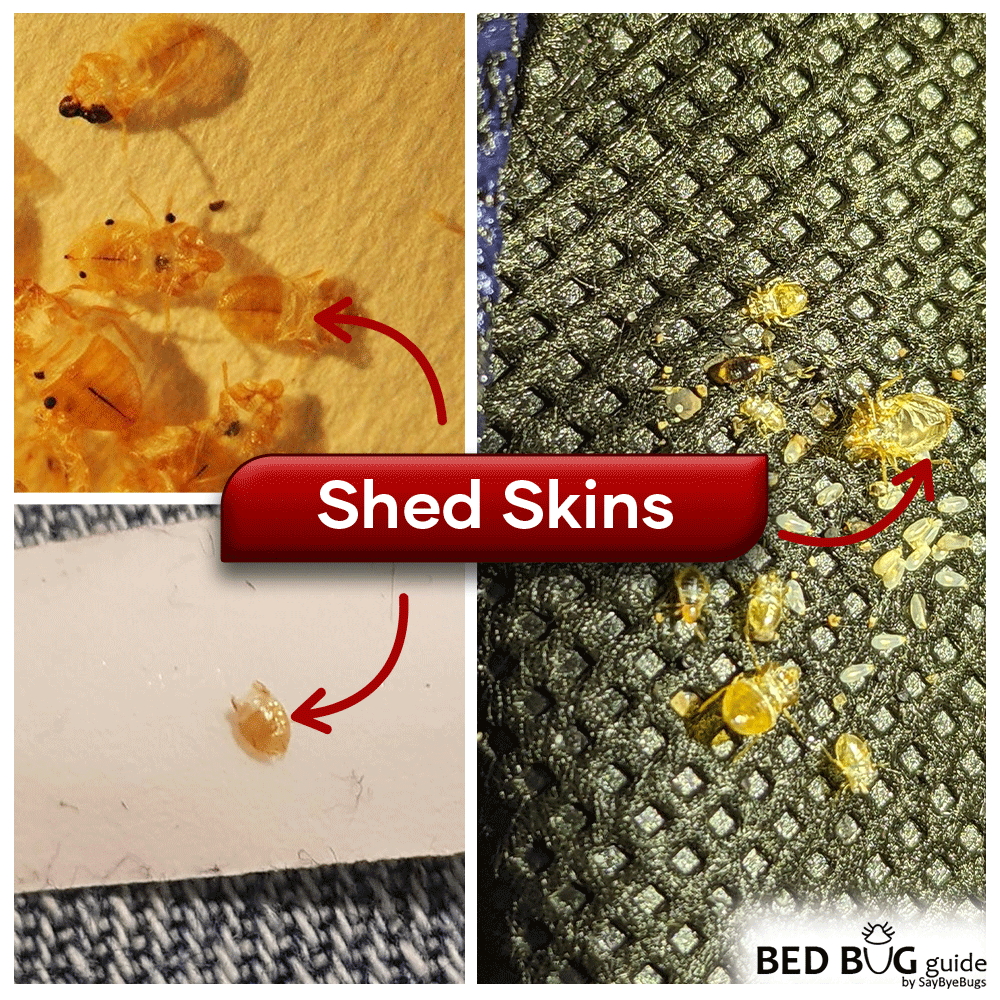
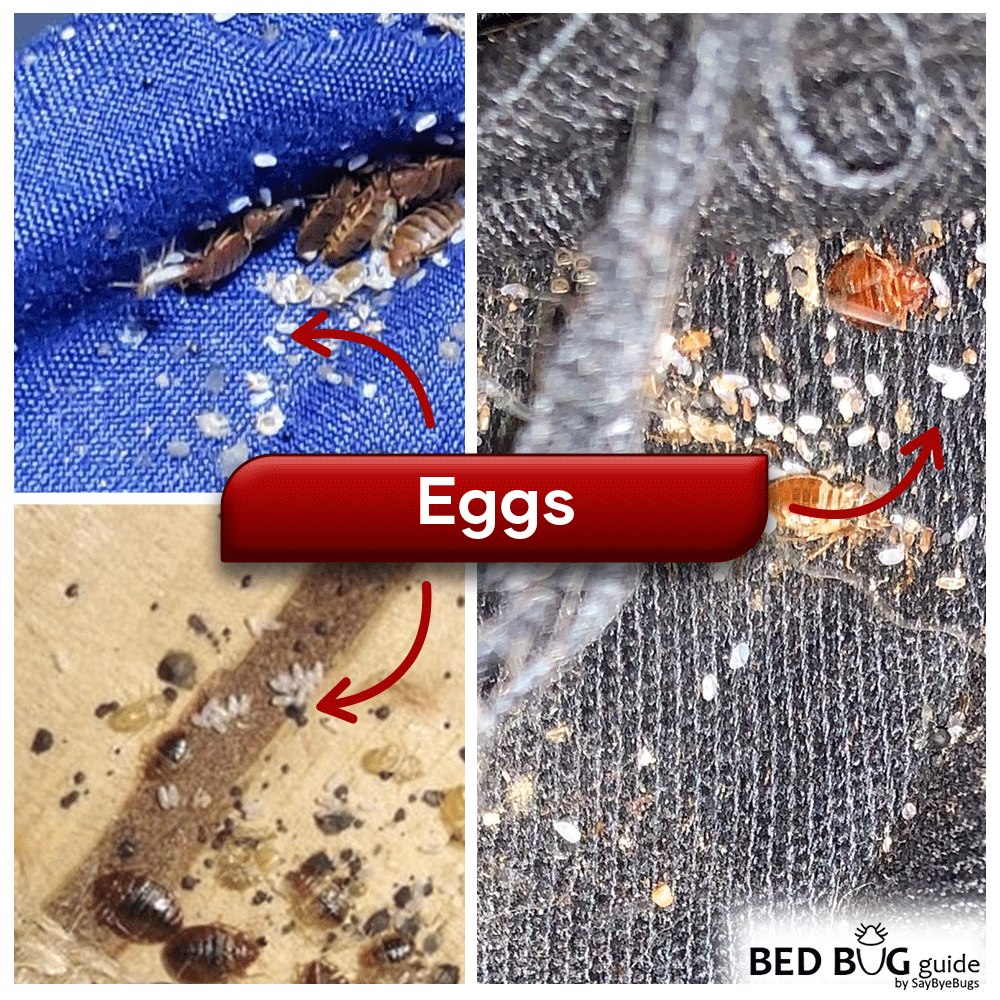

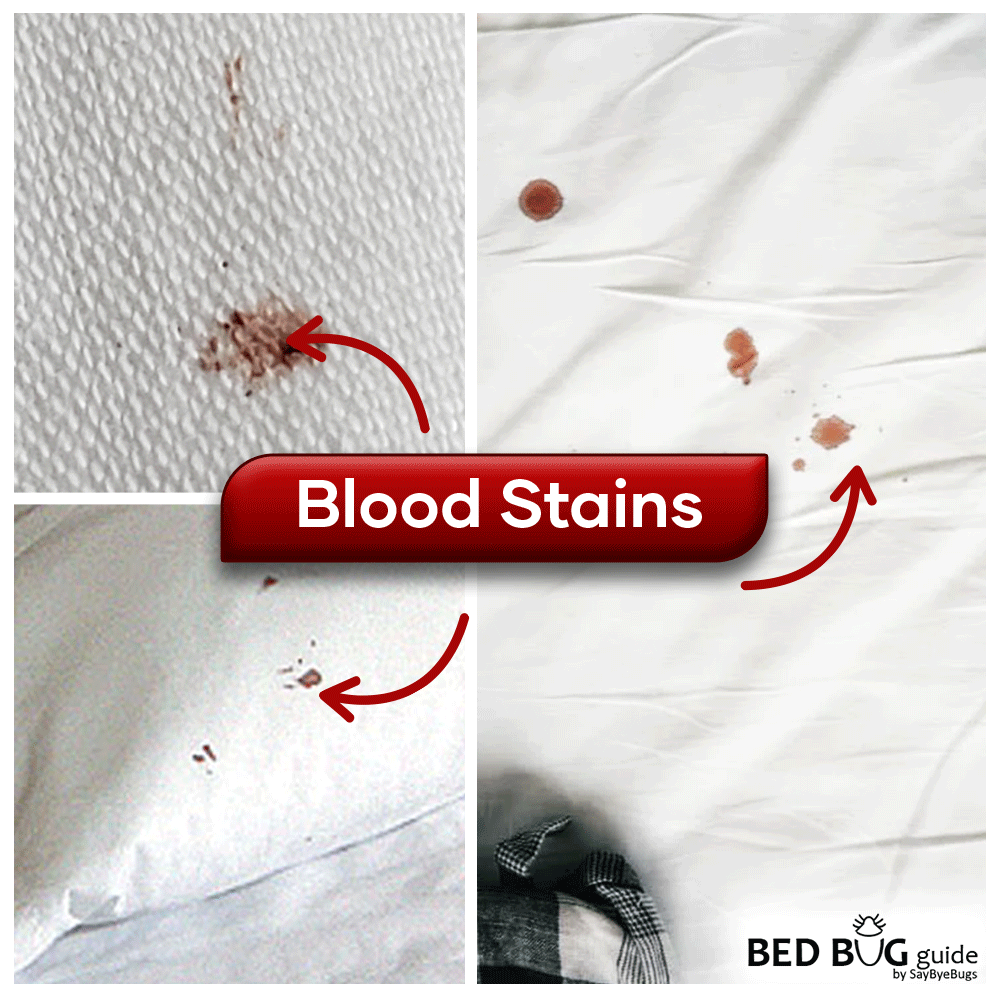
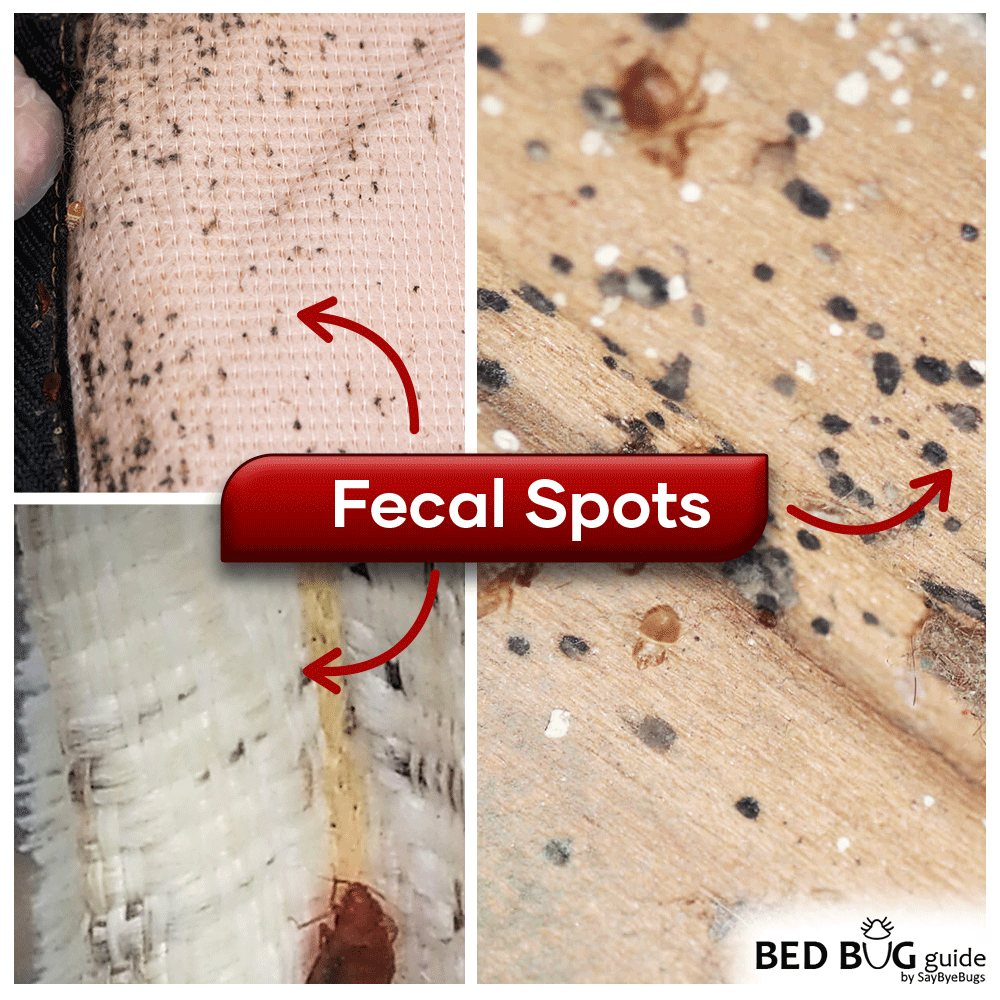
The more signs you find, the higher the chances of an infestation.
These signs are most commonly found in bed, but often even in its direct 10-20ft surrounding. Since there are no rules exactly where you could find them, we have prepared an exhaustive list of common and even uncommon areas you should check.
Before You Venture into Searching for Them…
You should prepare. Grab a:
- flashlight (a phone will do, a torch or a headlamp is better). This way you will be able to light up areas where bed bugs may hide. The dark corners, cracks, and crevices of your apartment and its furniture.
- a magnifying glass. During your home inspection, you will find many dots, specks, dust, and other particles that could look like a potential signs. Instead of moving your head in close, awkward positions, it will be much easier to just grab your finding, place it on the surface and inspect it with a magnifying glass. This brings us to the next item.
- An inspection surface (a piece of paper, a small plate, a jar, etc.) where you will be putting the items for easy verification.
- A handy tool such as pliers or a wrench to open or widen the crack, or even disassemble the items for inspection if needed.
- Forceps, tweezers, a screwdriver, or any thin piece of a harder material will do. This will enable you to poke, grab or carry the found elements onto the inspection surface.
- Gloves (optional).
- And a bed bug spray, if you are not only inspecting but also already treating the areas.
Once you have the tools at hand proceed to check the following bed bug hiding spots.
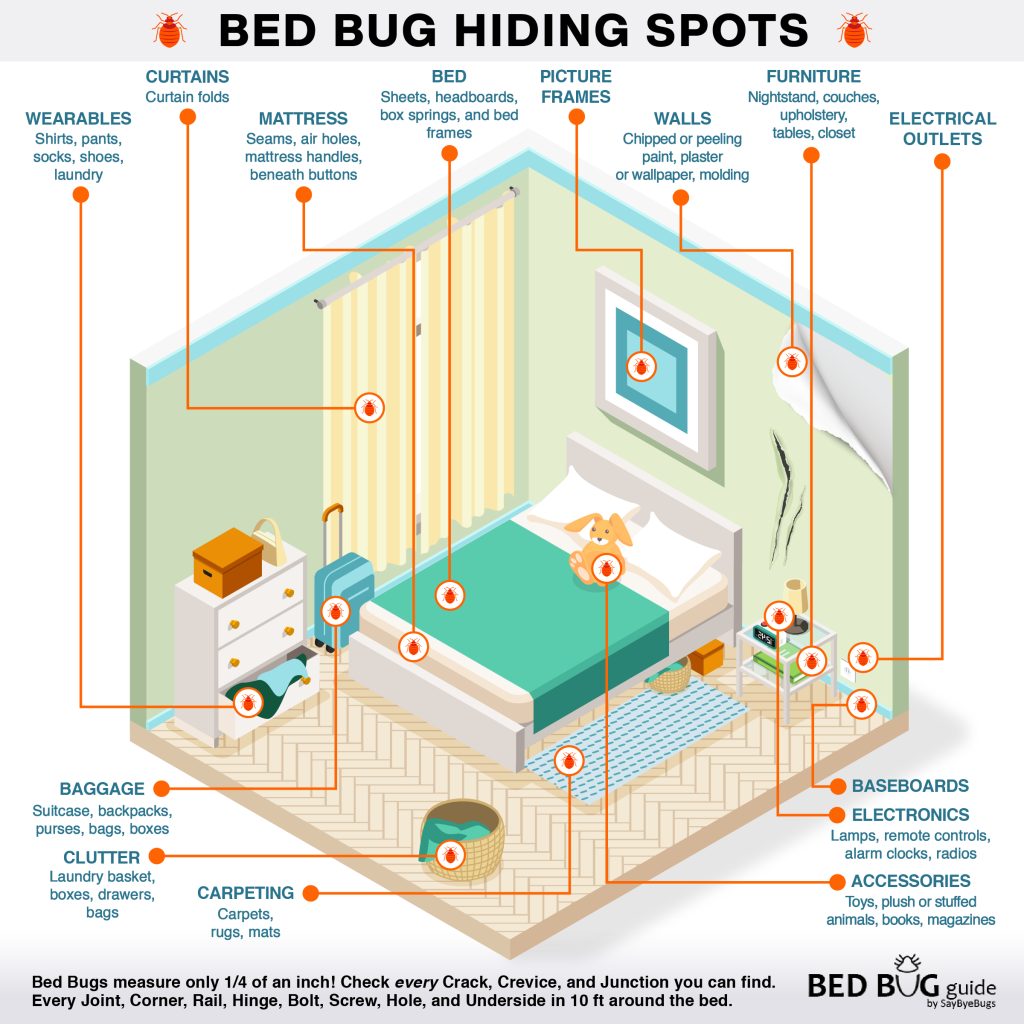
Common Hiding Spots
Regardless of the location, remember to always inspect every Crack, Crevice, Corner, Joint, Hole, and Side of or on the inspected element. Do not only glance over them, but use your hands or tools to widen the gap or remove the surfaces, and investigate the insides or underneath. If you see signs of bed bugs or suspect they are in an element, do not hesitate to disassemble it and inspect its interior. Make sure to take care of safety while conducting the investigation.
- Mattress. Check bedsheets and blankets, before removing them to inspect the mattress. Check zippers and seams, piping, stapling areas, underneath cushions, and within every fold. Under mattress handles, along or inside air holes, inside folds of material, and under buttons. If the mattress has rips in its material you need to inspect its interior. Check also between the mattress and box spring, platform, or bedframe.
- Box spring. Areas where the mattress sits on the box spring, and areas where the box spring sits on the frames. Check seams and insides of folds where the material is tacked to the frame. Turn the entire box spring over and inspect the underside. If possible remove the fabric cover and look beneath it. Proceed to disassemble the springs and look at joining surfaces, hollow areas, cracks, and holes.
- Bed frame and Headboard. Perform all steps as above, besides removing the headboard from the bed frame and away from the wall. This will reveal extra surfaces such as joints and walls behind the bed where bed bugs like to hide.
- Clutter, especially beneath the bed. This includes boxes, drawers, bags, etc. Closed or unclosed.
- Electronics, such as lamps, remote controls, alarm clocks, and radios. Make sure you plug them out of electricity before starting the inspection. They may even require disassembly, to verify if the bed bugs are inside. You may place them into plastic bags for further inspection and possible treatment.
- Chairs, couches, and upholstery. Do not forget to inspect them turned upside down. Look at, and underneath the legs. Remove thin surface layers to see what is underneath. Check screw and nail holes. Put special emphasis on areas where the material is stapled to the base.
- Furniture. Look at closets, nightstands, tables, and other furniture. Joints of drawers, corners, tracks, and undersides are ideal locations since they are small and dark. Empty drawers and shelves, take them out of the closet, and turn them upside down. Investigate the undersides, the corners, and every joint. Do not skip the doors (of the furniture or of the room) – their frames, hinges, and boreholes.
- Bedroom accessories such as toys, plush or stuffed animals, books, or magazines. Focus on seams, folds, zippers, and areas where the material is stapled together.
- Unsealed Clothing. Shirts, pants, socks, and even shoes. Those are located in the laundry basket, closets, and around the room.
- Baggage and travel items such as suitcases, backpacks, purses, and bags. Open them up and check the zippers, folds, and even wheels.
- Floor elements such as rugs, carpets, and baseboards. Roll them, if possible, and investigate the cracks and areas behind and beneath them. If material is coming off use the tools to fold back the edges and inspect deep into the crevice.
- Check curtains, and their folds. Take down the curtain rods and inspect their interiors.
- Walls, even moldings. Inspect everything hanging on the walls or on the ceiling: pictures, paintings, posters, frames, decorations, or utilities. Take it down and even disassemble it if it has cracks, to verify bed bug presence inside. Chipped or peeling paint, plaster, or wallpaper have numerous hiding spots, so inspect them closely. Pay special attention to ceiling corners and junctions where two surfaces meet or another material covers the wall.
If you have checked all those areas and found neither bed bugs, nor their signs, then you most likely do not have them.
On the other hand, continue with the investigation if have found their signs. If you are treating the room you should investigate the following location as well, as even a single fertilized female bed bug can reinfest your apartment.
Unusual bed bug locations
The chances of finding a bed bug in these locations are smaller than in the locations mentioned above. Nevertheless, verification is recommended, since bed bugs have been found in all of these locations.
- TV and any electrical remote controls. Check even the battery compartment.
- Sitting areas (couches, chairs, etc) in other rooms where you linger for longer periods.
- Phones and cell phones.
- Computers and other electronics.
- Ceiling light fixtures.
- Smoke detectors.
- Heating units.
- Air conditioning and air ducts.
- Wheelchairs or other mobility aid devices.
If you have electrical outlets, lights, detectors, or other electrical equipment you need to consult with a professional about a safe disassembly and inspection.
What to do once you Find a (Bed) Bug
With their size so small and many bugs looking alike, one may often confuse other bugs for bed bugs. You may resort to comparing your bug with other photos of bed bugs or you can simply use This automatic online tool where you upload your photo and it will tell you if it is a bed bug or not. It is a one-of-a-kind Online Tool that will help you identify Bed Bugs anytime and anywhere, completely free of charge with a snap of a button. You can check the tool here: identify.bedbugguide.com.
Once it is confirmed you have found a bed bug, proceed to the article 6 Steps to Take Immediately after Discovering Bed Bugs. Do not delay, as every additional day only gives the pest a chance to spread at a speed of up to 8 eggs/day per one inseminated adult female bed bug!
If however, you have been investigating the areas for treatment we recommend proceeding to select a treatment type. Consider SayByeBugs for minor and controlled home infestations. Its proven effectiveness and versatile applicability to all water-safe surfaces will ensure you can kill them in almost every situation. Being non-toxic and untraceable will ensure you need not worry about smell, stains, and your health. Just be weary around electricity and never spray it on elements with electrical current in them.
If, however, you need more help deciding which type of treatment is best for you may check the next article: How to Choose the Right Bed Bug Treatment?.
If you already know the basics about selecting a treatment type you may jump directly to this comprehensive treatment comparison tool.
More about Bed Bugs
Check this 2 min video below that explains the basics and how you can Easily Get Rid of them by Yourself.
More about Bed Bug Treatments
Click on the links below to learn more.
- Guaranteed Family Safe Solution Anyone can Apply
- Fellow American Explains his story with Bed Bugs: Robert’s lessons and How to be Rid of Bed Bugs for Good
- How to Choose the Right Bed Bug Treatment?
- Pros and Cons of Available Bed Bug Treatments
- 6 Steps to Take Immediately after Discovering Bed Bugs
- 9 Common Mistakes to Avoid when Dealing with Bed Bugs
More about Bed Bug Prevention
Click on the links below to learn more.
- Ultimate Guide for a Bed-Bug-Free Life
- Bed Bug Prevention for Travels
- Guide to Bed-Bug-Free Thrift Shopping
If you really want to get rid of bed bugs today try SayByeBugs! It was developed as a safe and highly effective alternative among a sea of products that rarely deliver on their promises.


